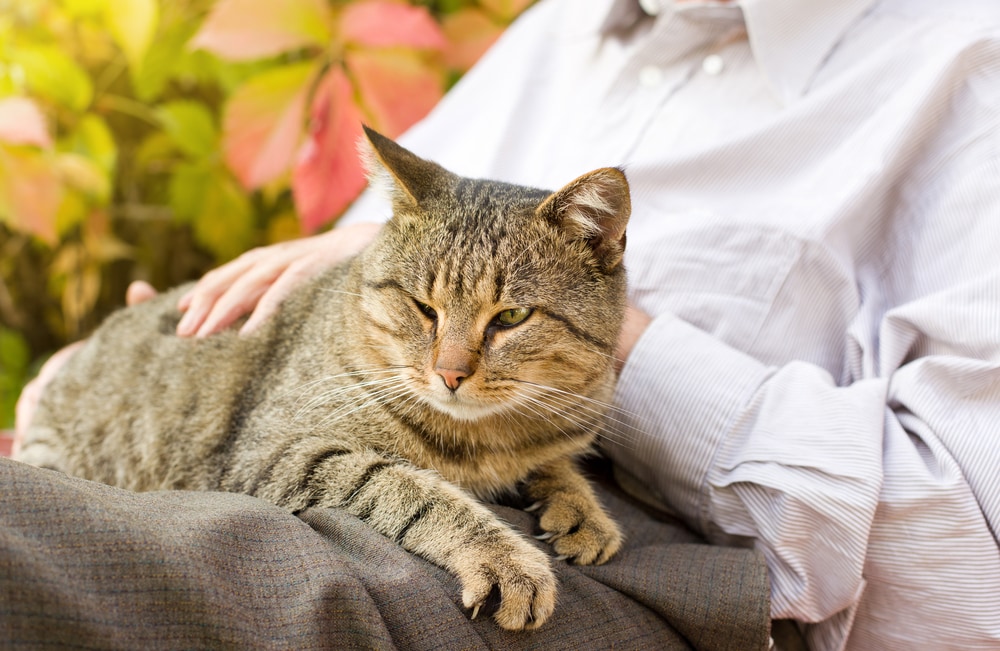fibrosarcoma in cats mouth
These tumors may spread to the underlying bone causing pain. SYMPTOMS OF MAUL TUMOR IN CATS Share.

The 3 Most Common Cancers In Cats
Other common causes of oral tumors in cats are fibrosarcomas osteosarcomas and odontogenic tumors.

. Most cats and dogs with oral cancer have a mass in the mouth noticed by the owner. Life Expectancy of Fibrosarcoma in Cats Thankfully in most cases cats who have been diagnosed with fibrosarcoma have a positive outlook. They arise as masses in the mouth more commonly than in the legs.
How is this cancer diagnosed. It is a mass that usually occurs in the skin of a cat at the site of an injection or vaccination. As it grows it means the cancerous cells are multiplying meaning the tumor is malignant.
Diagnosis may be performed through fine needle aspiration or biopsy. What are the symptoms of oral fibrosarcomas in cats and dogs. These lumps commonly occur at vaccine sites so pay attention to growths at areas on the cats body where vaccines have been administered such as shoulder blades or hips.
The average age of affected cats is 13 years but they may occur as early as one year of age. How will this cancer affect my pet. The most common oral tumor seen in cats is squamous cell carcinoma.
The area in between the shoulder blades is most often implicated making up for about 40 to 50 of these tutors. Treatment involves surgical removal of the tumors and radiation treatment may be considered if surgery is incomplete. Depending on the severity of the tumor for example if the tumor has spread to other areas or if it can be completely removed cats can live up to 3 years after a diagnosis.
Both of these tumors are locally aggressive can grow to a large size very quickly ulcerate and cause considerable pain. One type of growth is a fibrosarcoma a cancerous growth derived from fibrous connective tissue. Prognosis after surgical excision of fibrosarcomas in cats Abstract Forty-four cats from which fibrosarcomas had been excised were studied for a minimum of 3 years of until death.
In-depth Information on Bone Fibrosarcoma in Cats Fibrosarcoma is an uncommon type of cancer to affect the bone. After some or all of the above signs appear most pet owners will know that their cat has a medical. There are a variety of cell types in a cats mouth just like our own and all can become cancerous eg.
These cancers form from the fibroblasts cells that produce fibrous tissue and other supporting tissues most commonly arising beneath the skin. Fibrosarcoma in cats results in malignant tumors in the connective tissue and epidermis. Fibrosarcomas are the second most common oral tumor in cats.
These tumors arise from the connective and fibrous tissues of the oral cavity. Metastasis to organs is not common with both tumor types. The second most common is fibrosarcoma.
Odontogenic tumors arise from the tissues making up the teeth. As cats age they sometimes develop growths in their mouths. A fibrosarcoma lump is firm and feels fixed to the tissue below the skin.
The degree of malignancy of these tumours varies some are highly. Fibrosarcoma Soft Tissue Sarcoma. A tumor in the mouth is a development of abnormal cells.
The head legs in the mouth and anywhere else on its body. Fibrosarcomas arise from the connective tissues within the mouth often from the jaw bones. In a cat with mouth cancer a tumor or lump may be seen in the oral cavity.
They are the most common type of soft-tissue sarcoma tumors in cats and are also frequently observed in dogs. These lumps can appear anywhere on the cats body. Oral pain is usually apparent especially in cats with tumors that have penetrated the underlying bone.
The mass is likely not painful to your cat but can become infected and ulcerated if untreated. These tumors are very invasive locally meaning they invade the adjacent tissues which can make management difficult. Squamous cell carcinomas that develop in the tongue tonsils palate or the back of the mouth go undetected for a long time which is very frustrating for patients.
Radiotherapy and chemotherapy are two of the most common treatment options for feline fibrosarcoma. Symptoms of Fibrosarcoma in Cats The cats owner is most likely to notice lumps just underneath the surface of the cats skin. They are often very difficult to distinguish from the more common bone cancer osteosarcoma when small biopsy samples are evaluated.
It is a rare vaccine-induced form of cancer meaning that the tumors of fibrosarcoma form in response to a vaccine that your cat is given. Most fibrosarcomas form in the skin subcutaneous tissue the layer underneath the skin or oral cavity mouth. When tumors grow slowly and dont spread they are called benign.
Fibrosarcomas are relatively low in malignancy growing slowly and generally not spreading to other organs though they do aggressively invade other tissue and bone that is near them. Pets with oral tumors will typically have symptoms of increased salivation drooling facial swelling mouth bleed weight loss foul breath oral discharge difficulty. Oral fibrosarcomas are the second most common mouth tumors in cats but they still only represent approximately one in ten oral tumors.
Skin cells bone cells fiber cells. If they do they are labeled malicious. Oral fibrosarcomas are the second most common malignant oral tumor in cats.
Download PDF of this Fibrosarcoma in Cats article Visit the Oncology Service website Vaccine associated fibrosarcomas are tumors that arise at sites where cats have been vaccinated. They commonly present as gradually enlarging firm masses under the skin. Fibrosarcomas also known as fibroblastic sarcomas are malignant tumors derived from the fibrous connective tissue.
Fibrosarcoma in cats fibrosarcoma can appear anywhere as it is a tumor that develops in the subcutaneous tissue and then in the muscles of the body. Osteosarcomas arise solely from bony tissues such as the jaw bones. These tumors arise from the fibrous and connective tissues of the oral cavity.
There is no breed or sex predilection. Signs may include bad breath halitosis drooling panting movement or loss of teeth lack of appetite or difficulty eating reluctance to be touched on the head facial swelling and swelling of the lymph nodes. Fibrosarcoma is often caused by a tumor that forms at the injection site of a vaccine.
Two factors tumor site and mitotic index were found to be of prognostic significance but tumor size duration of growth and histologic appearance were not. Fibrosarcoma in Cats by John Gardiner April 11 2019 Fibrosarcoma in Cats How we can help Call 530-752-1393 to schedule an appointment with the Oncology Service. A potential sign is that the tumor does not resolve itself and instead grows.
Fibrosarcoma in dogs is often found in the mouth particularly the jaw and on the limbs.

Fibrosarcoma Soft Tissue Sarcoma International Cat Care

Managing Fibrosarcoma In Cats And Dogs Mommy S Memorandum
How To Help Your Cat Fight Cancer Naturally Homeoanimal Com

Wagaware Ambassador Zepplin Dog Adoption Sporting Dogs Dog Cat

Common Oral Tumors In Cats And Dogs Vet In Aurora The Animal Dental Clinic
Oral Tumors In A Cat In Southwest Florida

Fibrosarcoma In Cats Symptoms Causes Diagnosis Treatment Recovery Management Cost

Mouth Cancer In Cats Causes Symptoms Treatment All About Cats

7 Reasons To Immediately Bring Your Cat To The Er

Mouth Cancer Gingiva Fibrosarcoma In Cats Petmd

Mouth Cancer Gingiva Fibrosarcoma In Cats Petmd

Cancer In Cats International Cat Care

Managing Fibrosarcoma In Cats And Dogs Mommy S Memorandum

Feline Fibrosarcoma Bluepearl Pet Hospital

Mouth Cancer Gingiva Fibrosarcoma In Cats Petmd


/GettyImages-11673268481-ff230807a7e04e2db8e38e148edb19a5.jpg)
0 Response to "fibrosarcoma in cats mouth"
Post a Comment